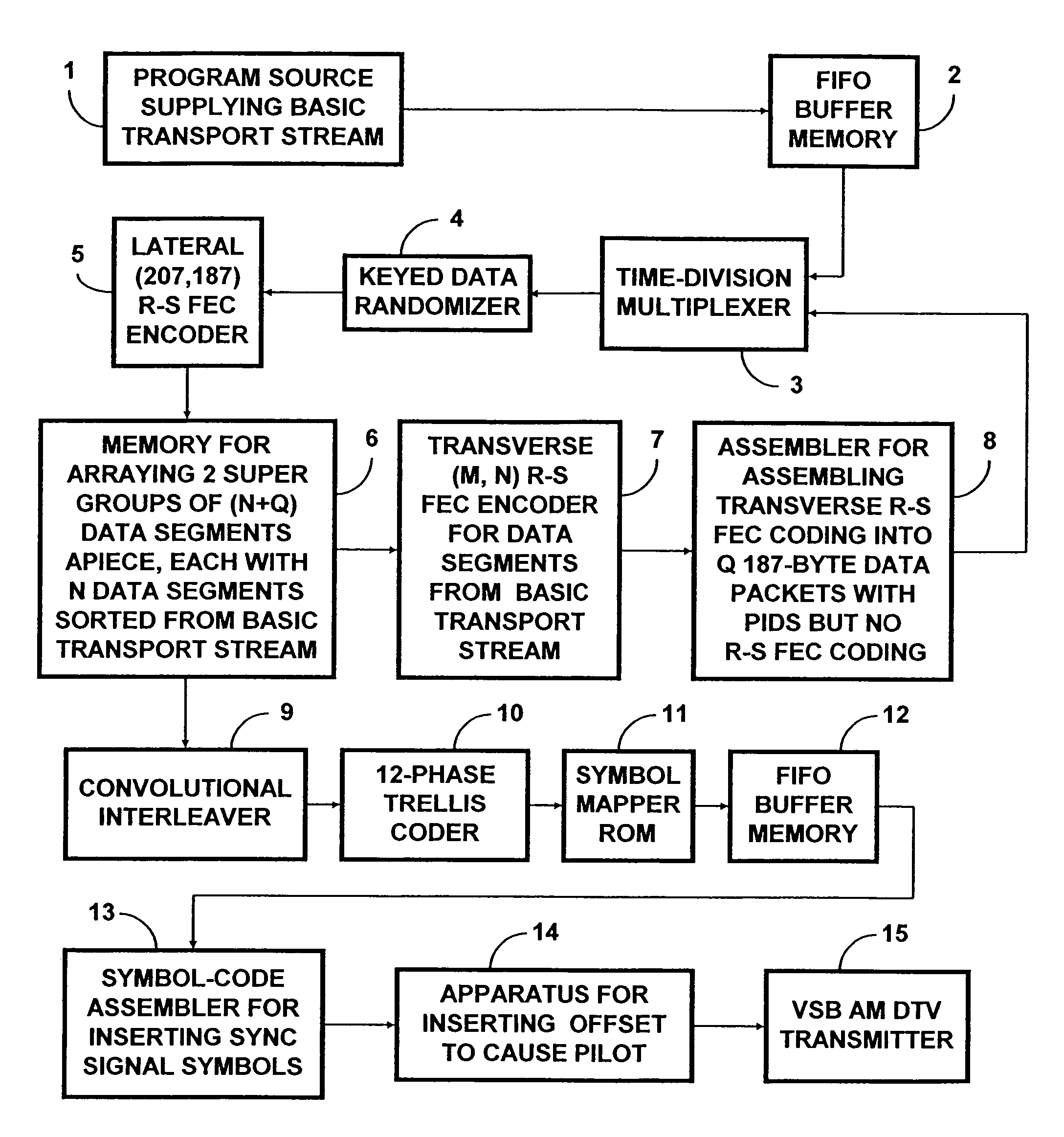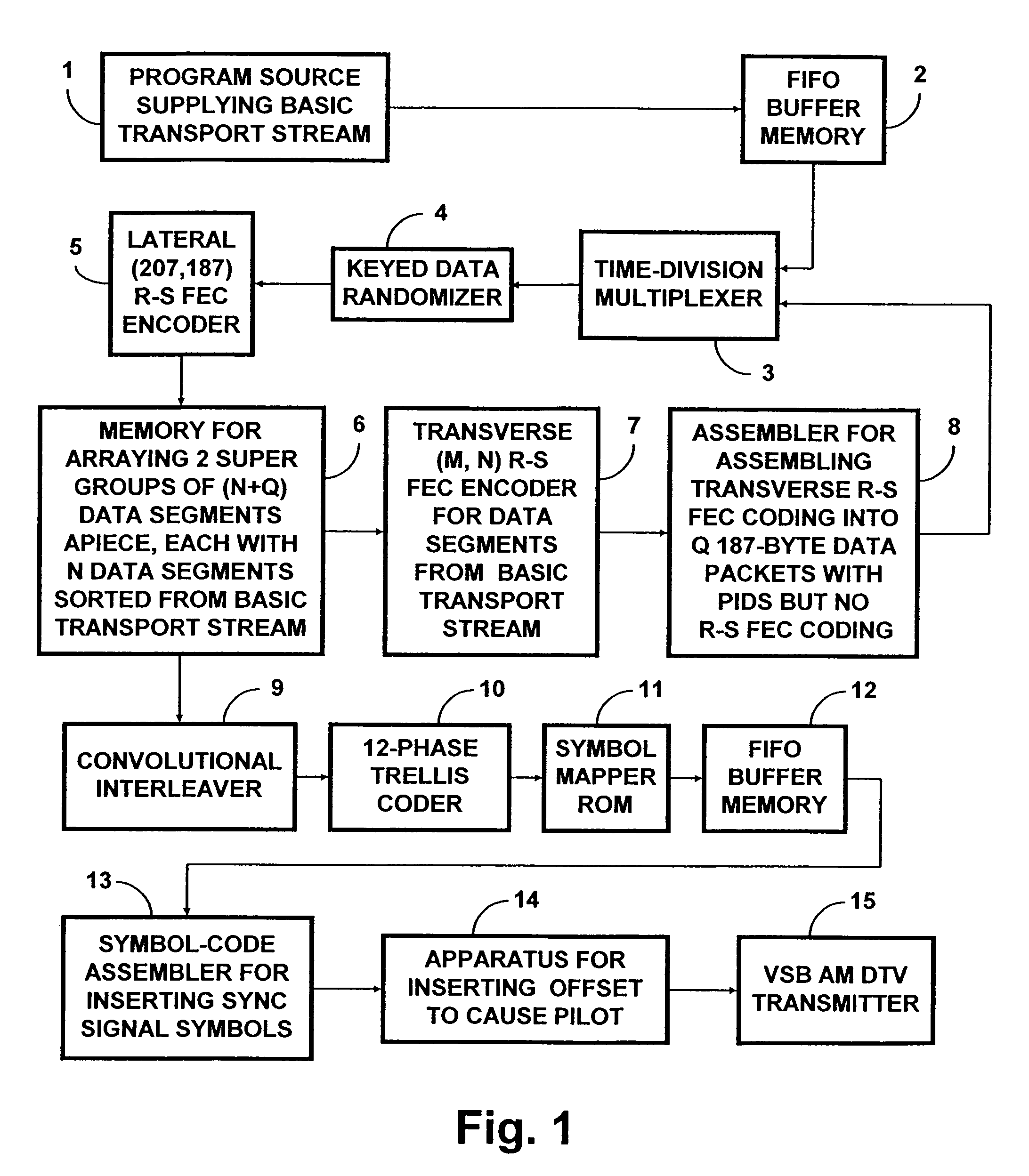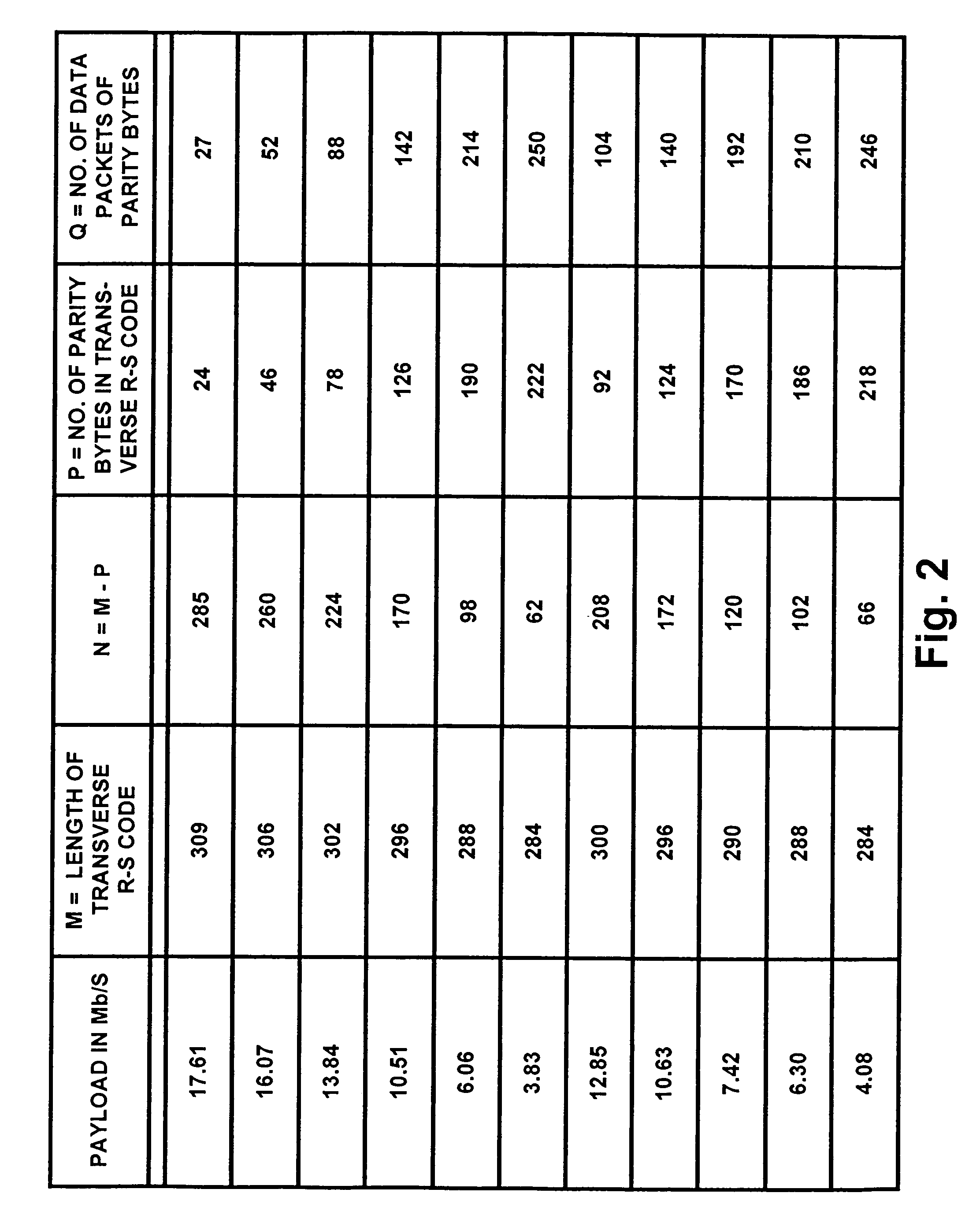Robust signal transmission in digital television broadcasting
a digital television and signal transmission technology, applied in the field of robust signal transmission in digital television broadcasting, can solve the problems of inability to utilize information transmitted in robust format by so-called “legacy” dtv receivers, inaudible to the human ear, and difficult to detect, so as to improve the level of additive white gaussian noise (awgn), easy to observe, and reduce the signal-to-noise ratio
- Summary
- Abstract
- Description
- Claims
- Application Information
AI Technical Summary
Benefits of technology
Problems solved by technology
Method used
Image
Examples
Embodiment Construction
[0053]FIG. 1 shows a transmitter for transmitting a robust DTV signal with payload that is reduced from that of an HDTV signal conforming to the A / 53 standard. Part of the payload is replaced with additional forward-error-correction (FEC) code in order to increase the robustness of the DTV transmission. A program source 1 supplies the basic transport stream in 187-byte data packets to a first-in / first-out buffer memory 2 for temporary storage therein. A time-division multiplexer 3 is connected for supplying 187-byte data packets to a keyed data-randomizer 4. Some of these 187-byte data packets correspond to 187-byte data packets read from the FIFO buffer memory 2. Others of these 187-byte data packets comprise transverse Reed-Solomon forward-error-correction code, the generation of which will be described in more detail further on in this specification.
[0054]The keyed data-randomizer 4 includes apparatus for generating a 216-bit pseudo-random binary sequence (PRBS) of the sort speci...
PUM
 Login to View More
Login to View More Abstract
Description
Claims
Application Information
 Login to View More
Login to View More - R&D
- Intellectual Property
- Life Sciences
- Materials
- Tech Scout
- Unparalleled Data Quality
- Higher Quality Content
- 60% Fewer Hallucinations
Browse by: Latest US Patents, China's latest patents, Technical Efficacy Thesaurus, Application Domain, Technology Topic, Popular Technical Reports.
© 2025 PatSnap. All rights reserved.Legal|Privacy policy|Modern Slavery Act Transparency Statement|Sitemap|About US| Contact US: help@patsnap.com



